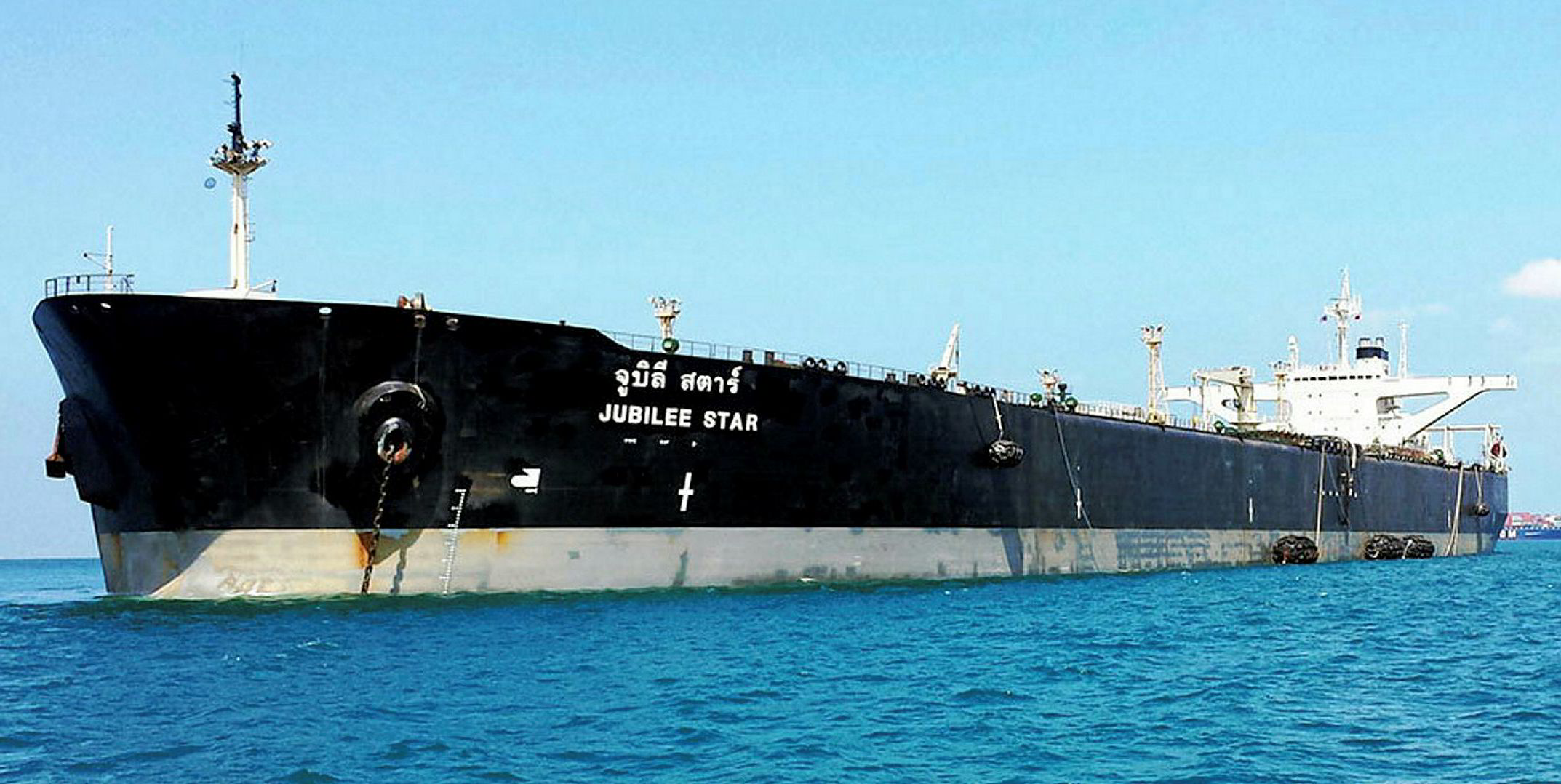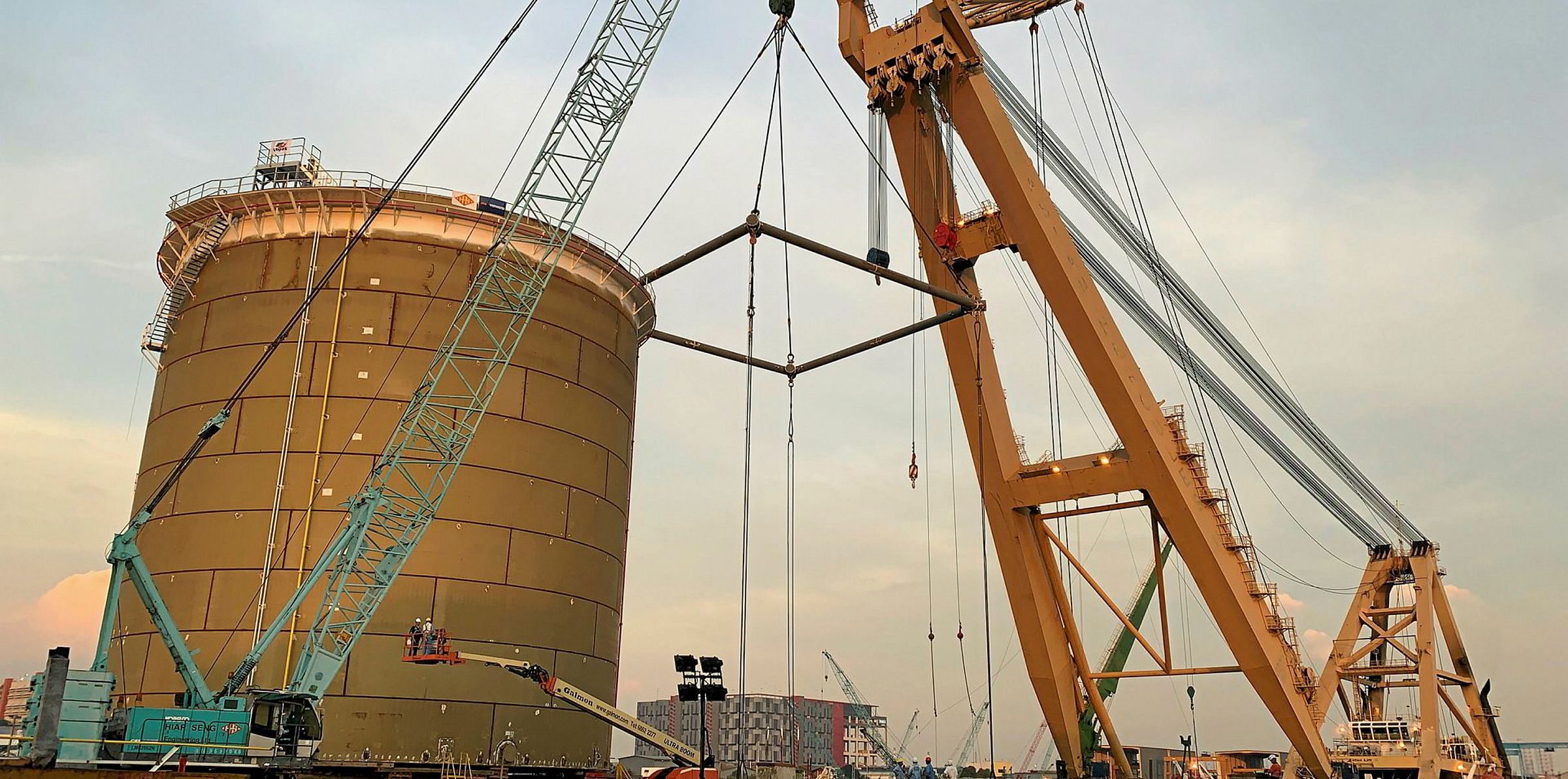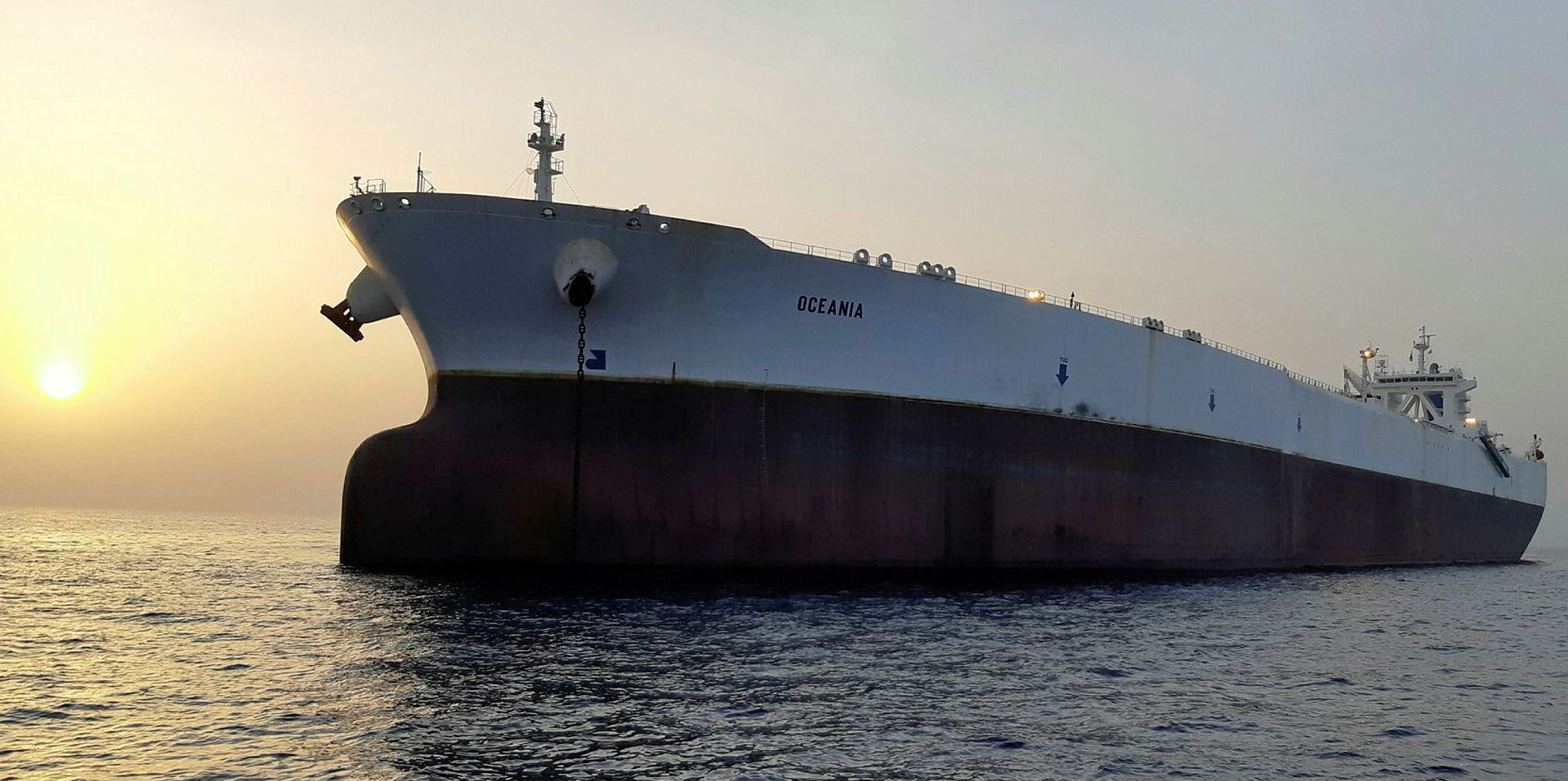Shipowners and traders in Asia are busy stockpiling.
Maersk Line's initiative to secure up to 40% of its low-sulphur fuel oil (LSFO) needs with storage deals in Europe, the US and Singapore has been well documented, while Euronav’s storage of LSFO on its 441,585-dwt ULCC Oceania (built 2003) in the Mediterranean was revealed by TradeWinds in February.
However, in Asia the picture is more opaque, with few owners revealing their plans for IMO 2020.
Only Japanese shipowner NYK has confirmed that it is following in Maersk’s footsteps and purchased around 40% of its monthly required volume of LSFO in advance in Singapore.
However, market sources suggest the bunker industry is gearing up storage, particularly close to Singapore.
“In the coming months we could see a flexible, low-cost floating tank farm in the Strait of Malacca,” Braemar’s senior tanker analyst in Singapore, Anoop Singh, tells Bloomberg.
“We expect to see a whole fleet of tankers off Singapore and Malaysia taking part in a low-sulphur oil blending play that will also be found off other major ports such as Fujairah and Rotterdam.”
Some traders are positioning themselves for the opportunities that the switch to low-sulphur fuels in Asia will provide, according to oil analytics firm Vortexa.
Germany’s Uniper Energy is said to have fixed the 310,000-dwt Jubilee Star (built 1996) for 0.5% blending as of April, say market sources.
“Floating storage in Singapore will broaden Uniper’s trading flexibility and give them more options. Without it, they can only sell FOB [free on board] basis Fujairah, or sell delivered cargoes into Singapore,” Vortexa says.
“Using the VLCC in this way will allow them to move product into the region without having to pre-sell it first. Moving an unsold cargo without a storage backstop significantly strengthens the buyer’s hand.”

With floating storage, Uniper can move volumes to the Asian market at will and stage the barrels from there into regional markets, Vortexa adds.
It can sell small or large volumes FOB or sell delivered volumes. It can also re-blend the volume if the opportunity arises, perhaps by taking in local components.
Vortexa says existing blending and storage units for LSFO operating in the Asia-Pacific will also increasingly be used for 0.5%-sulphur bunkers.
Japanese trading firm Mitsui is said to have set aside the 310,000-dwt Energy Star (built 1997), which has historically been used for blending and storage, for the LSFO utility market.
“This would mostly involve the blending of 0.3% sulphur max cargoes for Japanese buyers such as JX Energy. Going forward, the tanker can be expected to be used increasingly for 0.5% bunkers,” Vortexa says.
Market participants say that Mitsui, in a joint venture with South Korea’s SK Energy, will be adding two VLCCs to the area in the near future, marking a sizeable escalation in 0.5% storage in the region.
The three main grades — high-sulphur fuel oil (HSFO) 380 cSt, 0.5% fuel oil and 0.1% marine gasoil — “will be available at all large bunker hubs, while many second-tier ports will be supplied with only one or two of these grades or are yet to receive confirmation of what fuels will be available,” Sammy Six of pricing agency Argus Media tells TW+.
“The 10 largest bunker ports account for about 50% of bunker sales, but the remaining sales are shared across hundreds of ports.”
Six says the availability of HSFO at second-tier ports “could be difficult”, particularly in the first few months after the IMO regulation takes effect.
“Suppliers will begin cleaning tanks holding HSFO later this year in preparation to store IMO 2020-compliant fuels,” he adds.
“This process can take a month, and as suppliers are still unsure about what the fuel demand split will be, some intend to clean more tankers to store LSFO than may be needed.”
This could leave a shortage of HSFO in storage ports, and certain ports will not store it at all.
This article is from TW+ magazine, which will be distributed with TradeWinds on 24 May






